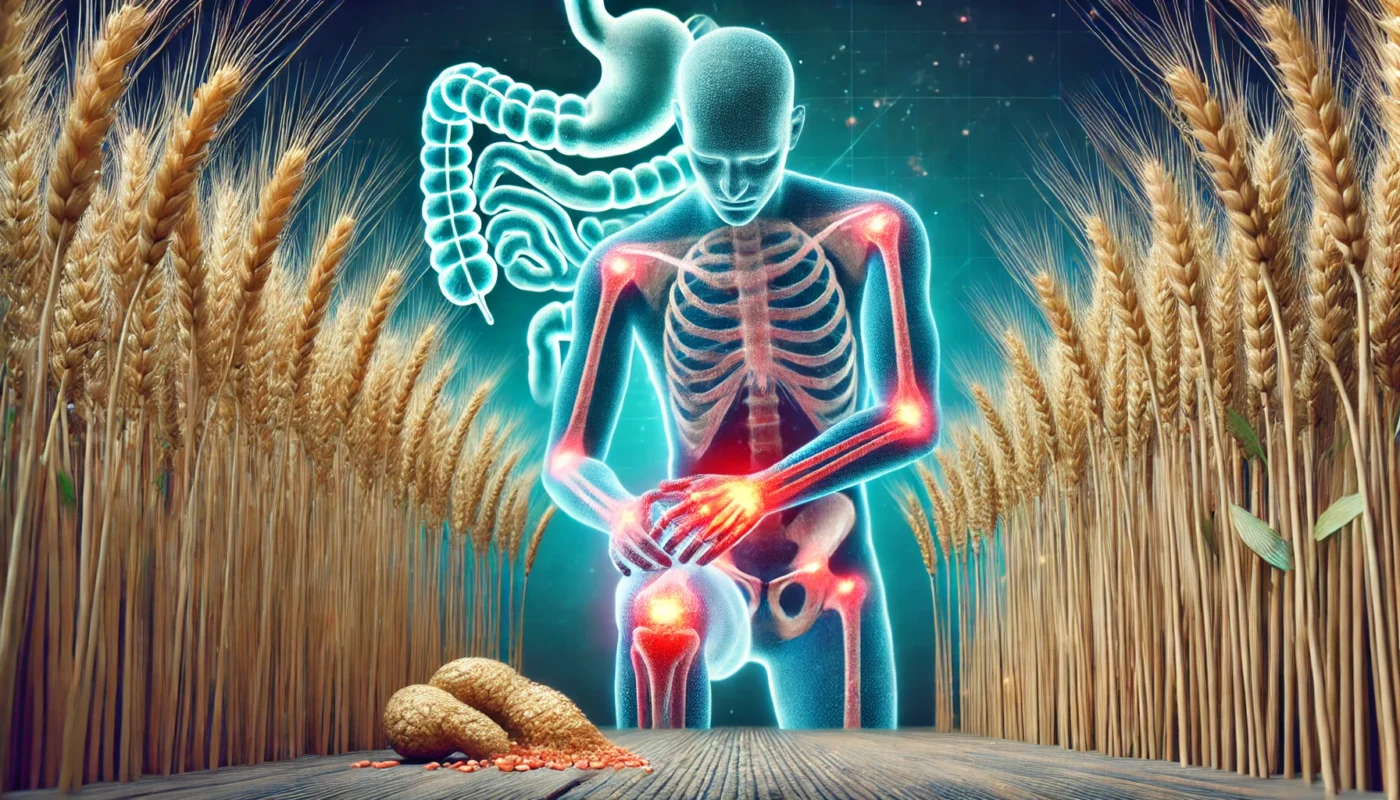White blood cells are the cornerstone of the body’s defense against infection and play a pivotal role in inflammation. These cells are primarily produced in the bone marrow and circulate through the blood and lymphatic tissues. There are several types of WBCs, each with specialized functions.
Tag Archives: exercise and inflammation
Joint inflammation is a common health concern. It’s often linked to arthritis, a condition affecting millions worldwide.
Diet is increasingly recognized as a key factor in managing joint inflammation. Among various dietary components, wheat, specifically gluten, has come under scrutiny.
The question arises: does wheat cause joint inflammation? This article aims to explore this complex issue.
We’ll delve into the biological mechanisms of gluten’s impact on the body. We’ll also examine the difference between celiac disease, wheat allergy, and non-celiac gluten sensitivity.
The potential link between wheat consumption and joint inflammation is a topic of ongoing research. We’ll review the current scientific evidence, acknowledging the need for further studies.
Personal anecdotes of arthritis improvement on a wheat-free diet add another layer to the narrative. We’ll share these stories, while emphasizing the importance of individual dietary responses.
Finally, we’ll provide practical advice for those considering a wheat-free diet. We’ll also discuss the broader implications of dietary choices on joint health.
Join us as we navigate the intricate relationship between wheat and joint inflammation. This exploration aims to empower you with knowledge, enabling informed decisions about your health.
Inflammation is a natural response of the body’s immune system to injury or infection. However, chronic inflammation can lead to a variety of health issues, including cardiovascular diseases, diabetes, and autoimmune disorders. Amidst the plethora of anti-inflammatory foods, lettuce often goes unnoticed. But does lettuce really play a role in combating inflammation? Let’s delve into the anti-inflammatory benefits of lettuce and how it can be a beneficial addition to your diet.
Inflammation is a natural response of our bodies. It’s a defense mechanism against injuries, infections, and toxins. But when it becomes chronic, it can lead to serious health issues.
Understanding how to manage inflammation is crucial. One effective way is through our diet. Certain foods have properties that can help reduce inflammation in the body.
This article will guide you through the top 20 anti-inflammatory foods. These are foods that are not only delicious but also packed with nutrients that can help combat inflammation.
We’ll delve into the science behind these foods. We’ll explore how they work to reduce inflammation and the research that supports their benefits.
But it’s not just about what to eat. It’s also about what to avoid. We’ll identify common inflammatory foods that you might want to limit or eliminate from your diet.
We’ll provide practical tips on how to incorporate these anti-inflammatory foods into your meals. From breakfast to dinner, we’ll help you craft a diet that supports your health and wellbeing.
We’ll also discuss the role of lifestyle factors. Exercise, stress management, and sleep can all influence inflammation levels in the body.
Supplements can also play a role in managing inflammation. We’ll discuss when they might be beneficial and how to use them safely.
Finally, we’ll emphasize the importance of personalizing your approach. Everyone is unique, and what works for one person may not work for another.
Whether you’re a fitness enthusiast, a health enthusiast, or a medical patient, this guide is for you. It’s a comprehensive resource for anyone looking to understand and apply the principles of an anti-inflammatory diet.




